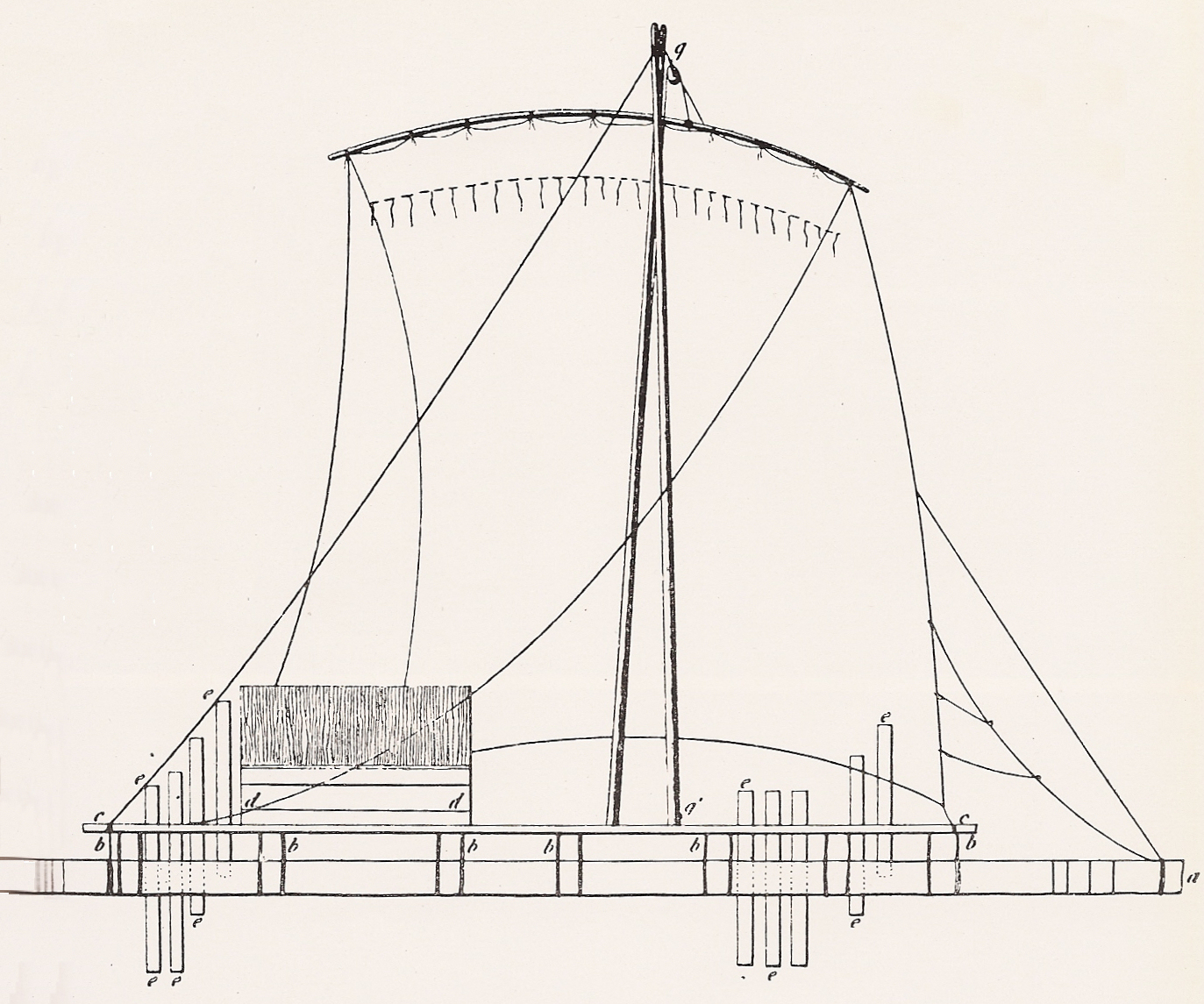|
Raft (other)
A raft is a flat floating structure for travel over water. Raft may also refer to: Arts, entertainment, and media *Raft (band), a French band * ''Raft'' (album), a 2017 studio album by Mike Cooper * ''Raft'' (novel), a science fiction novel by Stephen Baxter * ''Raft'' (video game), a survival game developed by Redbeet Interactive and published by Axolot Games *The Raft (comics), a fictional prison in comic books published by Marvel * The Raft (MCU), a fictional prison in Marvel Cinematic Universe * "The Raft" (short story), a horror short story by Stephen King *The Raft, a fictional refugee flotilla in Neal Stephenson's novel ''Snow Crash'' Computing and technology *Raft (algorithm), a distributed consensus protocol *RaftLib, the Raft library for parallel processing with iostreams and compute kernels Organizations *Remote Area Firefighting Team (RAFT), firefighting specialists * Resource Area for Teaching (RAFT), a nonprofit organization supplying materials and ideas to teach ... [...More Info...] [...Related Items...] OR: [Wikipedia] [Google] [Baidu] |
Raft
A raft is any flat structure for support or transportation over water. It is usually of basic design, characterized by the absence of a hull. Rafts are usually kept afloat by using any combination of buoyant materials such as wood, sealed barrels, or inflated air chambers (such as pontoons), and are typically not propelled by an engine. Rafts are an ancient mode of transport; naturally-occurring rafts such as entwined vegetation and pieces of wood have been used to traverse water since the dawn of humanity. Human-made rafts Traditional or primitive rafts were constructed of wood, bamboo or reeds; early buoyed or float rafts use inflated animal skins or sealed clay pots which are lashed together. Modern float rafts may also use pontoons, drums, or extruded polystyrene blocks. Depending on its use and size, it may have a superstructure, masts, or rudders. Timber rafting is used by the logging industry for the transportation of logs, by tying them together into rafts and d ... [...More Info...] [...Related Items...] OR: [Wikipedia] [Google] [Baidu] |
Remote Area Firefighting Team
Remote Area Firefighting Team (RAFT) personnel are members of a number of Australian fire services, including the Queensland RURAL Fire Service, New South Wales Rural Fire Service, NSW National Parks and Wildlife Service and the ACT Rural Fire service who are particularly effective for work in rugged, isolated areas that firefighting tankers can’t access by road. They can then be transported in 4WD before hiking to the fireground, or sometimes winched in by helicopter. RAFTs are skilled in dry firefighting techniques such as creating firebreaks by cutting mineral earth trails or undertaking backburning work. The winch training is just one aspect of the RAFT program which also includes a medical examination and fitness test to ensure crews can cope with this strenuous form of firefighting. The ‘arduous pack test’ involves walking 4.83 km carrying 20.4 kg in 45 minutes or less to be eligible participate in training, or 43 minutes to be considered operationally dep ... [...More Info...] [...Related Items...] OR: [Wikipedia] [Google] [Baidu] |
Rafting
Rafting and whitewater rafting are recreational outdoor activities which use an inflatable raft to navigate a river or other body of water. This is often done on whitewater or different degrees of rough water. Dealing with risk is often a part of the experience. This activity as an adventure sport has become popular since the 1950s, if not earlier, evolving from individuals paddling to rafts with double-bladed paddles or oars to multi-person rafts propelled by single-bladed paddles and steered by a person at the stern, or by the use of oars. Rafting on certain sections of rivers is considered an extreme sport and can be fatal, while other sections are not so extreme or difficult. Rafting is also a competitive sport practiced around the world which culminates in a world rafting championship event between the participating nations. The International Rafting Federation, often referred to as the IRF, is the worldwide body which oversees all aspects of the sport. Equipment ... [...More Info...] [...Related Items...] OR: [Wikipedia] [Google] [Baidu] |
Raft Island
Raft Island is a private island and CDP located near the Pierce County community of Rosedale, Washington, United States. Gig Harbor, Washington is the nearest incorporated town, although unincorporated Artondale is much closer. The island features approximately 200 homes on 160 acres. All of these homes are served through the Gig Harbor post office. * Raft Island is privately managed by the Raft Island Improvement Association (an HOA) and its homeowner members. Raft Island contains private parks, private roads, private beaches, a private tennis court, a private boat launch, and a private church camp. The island is connected to the mainland by a -long bridge. * Raft Island size varies between 160 and 201 acres (813,910 m²) in area depending on high or low tide, and is oval in shape. It is located in Henderson Bay within Puget Sound. Lieutenant Peter Puget of the Vancouver Expedition ed by Captain George Vancouver, arriving here in 1792was the first recorded person that w ... [...More Info...] [...Related Items...] OR: [Wikipedia] [Google] [Baidu] |
Great Raft
The Great Raft was an enormous log jam or series of "rafts" that clogged the Red and Atchafalaya rivers in North America from perhaps the 12th century until its removal in the 1830s. It was unique in North America in terms of its scale. Origin The Great Raft possibly began forming in the 12th century, or earlier. It grew from its upper end, while decaying or washing out at the lower end. By the early 1830s, it spanned more than . The raft, at one point, extended for from Loggy Bayou to Carolina Bluffs. The Caddo People, regional inhabitants for millennia, incorporated the Great Raft into their mythology as protector from competing tribes, and recognized the contribution of associated intermittent flooding to soil fertility and agriculture. Harrelson et al. describe the origins of the raft: This ecosystem of entangled logs, vegetation and sediments remained in place for almost two millennia, altering the flow regime of the Red River and causing a complete change in its geo ... [...More Info...] [...Related Items...] OR: [Wikipedia] [Google] [Baidu] |
George Raft
George Raft (né Ranft; September 26, 1901 – November 24, 1980) was an American film actor and dancer identified with portrayals of gangsters in crime melodramas of the 1930s and 1940s. A stylish leading man in dozens of movies, Raft is remembered for his gangster roles in ''Quick Millions (1931 film), Quick Millions'' (1931) with Spencer Tracy, ''Scarface (1932 film), Scarface'' (1932) with Paul Muni, ''Each Dawn I Die'' (1939) with James Cagney, ''Invisible Stripes'' (1939) with Humphrey Bogart, and Billy Wilder's comedy ''Some Like It Hot'' (1959) with Marilyn Monroe and Jack Lemmon; and as a dancer in ''Bolero (1934 film), Bolero'' (1934) with Carole Lombard and a truck driver in ''They Drive by Night'' (1940) with Ann Sheridan, Ida Lupino and Bogart. Early life and career Raft was born at 415 West 41st Street in Hell's Kitchen, Manhattan, Hell's Kitchen, Manhattan, New York City, the son of Eva ( Glockner), a German immigrant, and Conrad Ranft, who was born in Massachusetts ... [...More Info...] [...Related Items...] OR: [Wikipedia] [Google] [Baidu] |
Floating Raft System
Floating raft is a land-based building foundation that protects it against settlement and liquefaction of soft soil from seismic activity. It was a necessary innovation in the development of tall buildings in the wet soil of Chicago in the 19th century, when it was developed by John Wellborn Root who came up with the idea of interlacing the concrete slab with steel beams. The earliest precursor to the modern version may be the concrete rafts developed for the building of Millbank Prison in 1815 by Robert Smirke. For a floating raft foundation – or simply "floating foundation" – the foundation has a volume such that, if that volume filled with soil, it would be equal in weight to the total weight of the structure. When the soil is so soft that not even friction piles will support the building load, these types of foundation are the final option and makes the building behave like a boat: obeying Archimedes' principle, buoyed up by the weight of the earth displaced in creatin ... [...More Info...] [...Related Items...] OR: [Wikipedia] [Google] [Baidu] |
Raft Spider
The raft spider, scientific name ''Dolomedes fimbriatus'', is a large semi-aquatic spider of the family Dolomedidae found throughout north-western and central Europe. It is one of only two species of the genus ''Dolomedes'' found in Europe, the other being the slightly larger Great raft spider, ''Dolomedes'' ''plantarius'' which is endangered in the UK. Habitat and description Raft spiders are semiaquatic, semi-aquatic and adults inhabit freshwater wetlands, specifically wet heaths and acid swamps; although juveniles are predominantly found in terrestrial vegetation surrounding wetland areas. Adults are dark brown with a conspicuous white, cream or yellow stripe along both sides of their abdomen and thorax. Juveniles are similar in appearance but often have green translucent legs. As is common in other spiders, female raft spiders (body length: 9–22mm) are usually larger than males (body length (9-15mm). Dolomedes fimbriatus was described in chapter 5 of the book ''Svenska S ... [...More Info...] [...Related Items...] OR: [Wikipedia] [Google] [Baidu] |
Lipid Raft
The cell membrane, plasma membranes of cells contain combinations of glycosphingolipids, cholesterol and protein Receptor (biochemistry), receptors organized in glycolipoprotein lipid microdomains termed lipid rafts. Their existence in cellular membranes remains controversial. Indeed, Kervin and Overduin imply that lipid rafts are misconstrued protein islands, which they propose form through a proteolipid code. Nonetheless, it has been proposed that they are specialized membrane microdomains which compartmentalize cellular processes by serving as organising centers for the assembly of signaling molecules, allowing a closer interaction of protein receptors and their effectors to promote kinetically favorable interactions necessary for the signal transduction. Lipid rafts influence membrane fluidity and membrane protein Protein targeting, trafficking, thereby regulating neurotransmission and receptor trafficking. Lipid rafts are more ordered and tightly packed than the surrounding bil ... [...More Info...] [...Related Items...] OR: [Wikipedia] [Google] [Baidu] |



